Violet babies (Saintpaulia): features and recommendations for transplantation
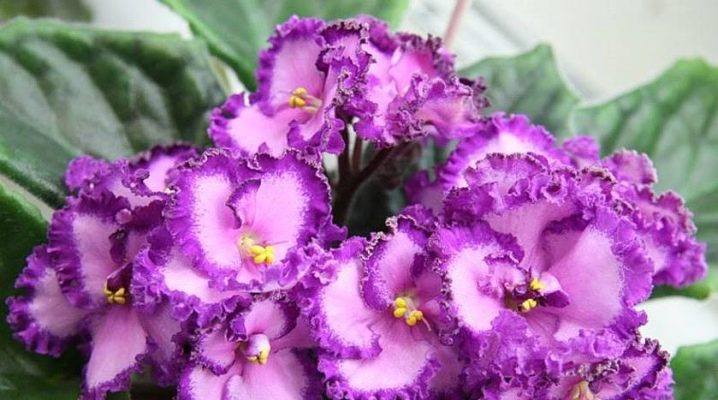
Violets flaunt on the windowsills of many apartments and houses. This is perhaps one of the most popular indoor plants. Saintpaulia (the scientific name for violets) does not differ in particular whimsical care. A variety of species and varieties allows you to create a whole blooming garden in the room. In addition, the reproduction of this plant is not laborious and is quite accessible even to beginners who do not yet have experience in growing it. The article will focus on the reproduction of Saintpaulia by children, as well as further care for the flower.

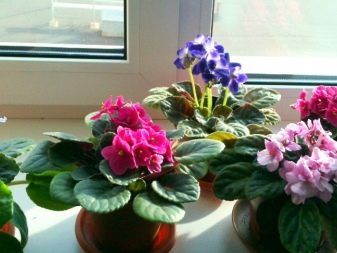
What it is?
Reproduction of indoor violets at home occurs by grafting and subsequent rooting of the cut leaf. For this, a strong and healthy leaf is selected from an adult plant and separated. The cut stalk is placed in a small container with water until the roots appear, or immediately planted in the ground.
A violet baby appears at a transplanted cuttings that have taken root in a new place. Small leaves begin to appear from the soil next to the stem of the established leaf. These are the kids. Each cutting can produce a different number of small shoots. The number of young rosettes depends on the violet variety and growing conditions. With the most favorable factors, the stalk can give up to 7-8 new outlets.
Each baby has its own root system, which allows these young plants to be transplanted into separate cups and pots.

What is the difference from a starter?
After the babies get a little stronger, they are separated from the mother's cutting and planted in separate small containers. Thus, young violets continue to develop as independent plants.
Former babies can bloom after 7-8 months. It is such an independent plant, which is at the stage preceding the first flowering, and is called a starter. Conventionally, such a Saintpaulia could be called a "teenager". The starter is not yet an adult violet, but a fully matured flower with a fully developed root system and aerial part. In this it differs from children in whom the roots are still very poorly formed, and the leaves have not reached sufficiently large sizes.
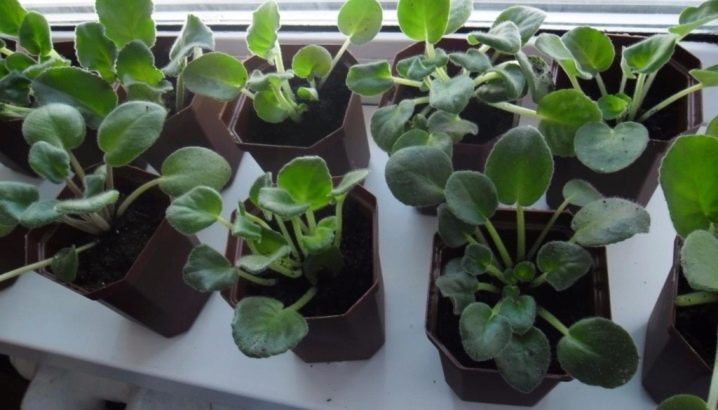
How long does it take to appear?
To start the development of children, it is necessary that the mother's leaf itself rooted well and began to feed the offspring. This process takes about 2-3 weeks. Usually, the appearance of the first young outlets has to wait at least a month. If the stalk has not given birth two months after the time of planting, it does not make sense to expect it. Experienced growers in such cases do two things: either they cut off this leaf again and root it in the ground, or they remove a third of the leaf plate so that the mother plant sends more forces to the development of the root system and children.

What if they grow poorly?
Sometimes it happens that young children have appeared from under the ground, but practically do not develop. The leaves do not get stronger and do not increase in size. If the mother plant has several outlets, then uneven growth is the norm. Almost always, babies develop differently: some quickly and confidently grow stronger and grow, while others grow slowly. In this case, the most developed shoots should be selected for transplantation.
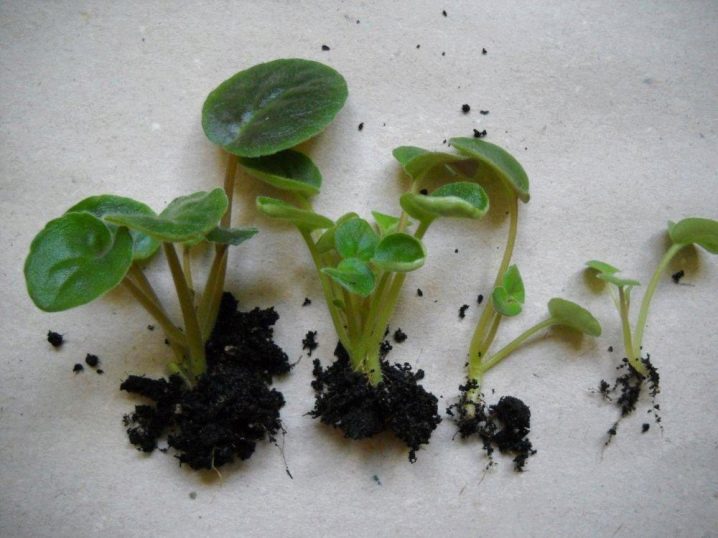
If the stalk gave a small number of children (only 1-3), then the reason for their slow growth is most likely insufficiently favorable conditions. The root system of young plants may develop poorly due to improper, too abundant or too poor watering.
Violets do not tolerate soil acidification and heavy substrates.
You should also pay attention to the temperature regime in the room, especially in winter. Plants may be too close to the window and exposed to cold drafts.

To speed up the development of outlets, you can feed the flower. To do this, during irrigation, nitrogen-containing nutrient fertilizers are introduced into the soil. It should be borne in mind that for shoots, the concentration of feeding should be 8 times lower than for watering with a similar composition of an adult plant. An excess of nitrogenous substances can also adversely affect the development of the root system of violet shoots.
To help the kids grow faster, place the pots and cups of plants in the mini greenhouse. It can be made using a plastic container from a cake or other food. Containers with cuttings should be placed in a container of suitable depth and covered with polyethylene on top. This design will create a small greenhouse effect and save young sprouts from temperature extremes.
It is important not to forget to ventilate the "greenhouse" a couple of times a day, removing the plastic cover.
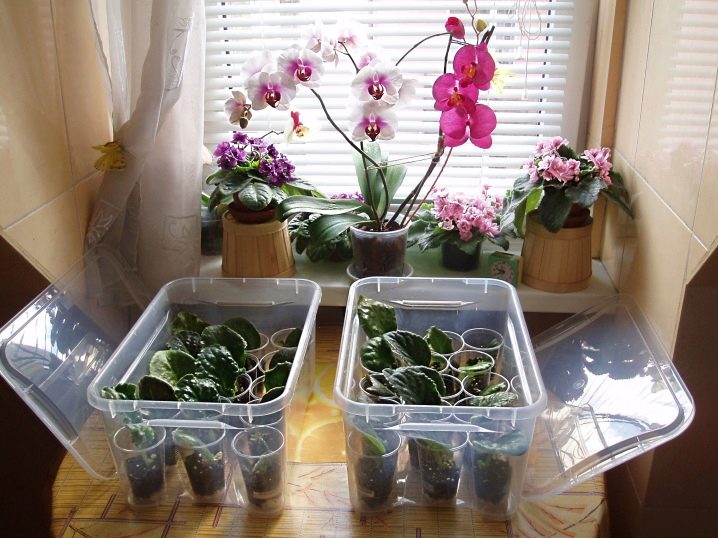
Perhaps the babies do not develop due to the unsuitable soil in which the cutting was planted. The most effective way in this case is to transplant the mother plant along with the shoots into another substrate. Make sure it is nutritious enough and not heavy.
There are situations when the mother leaf develops very actively and gives too extensive root system. As a result, in the small container in which it was originally planted, the rooted cuttings become very cramped. For the same reason, the roots of new rosettes cannot develop well enough. The babies, along with the mother's cuttings, should be transplanted into a larger pot. The plant should not be buried so that the edges of the container are higher than the shoots. In such conditions, the small sprouts of violets will lack light, which will negatively affect their growth.

When and how to transplant?
Before you put the children away from the mother's sheet, you need to let them get stronger. When young shoots give 3-4 leaves and grow up to at least 2 cm, you can start transplanting. In variegated varieties of violets, children appear from the soil not green, but white. Over time, they turn green. For these varieties, the color of the leaves is just an indicator of the readiness of the outlets for separation and transplantation.
If the babies are white or too light, then it is too early to separate and plant them.
Experienced flower growers are often in no hurry to place the children in separate containers. They are ready to wait more than two months after the sprouts appear, until they stretch up to 4-5 cm. However, the babies take root quite well. The main thing is to carefully separate the root system of the outlets.
So, you can give the sprouts more time to get stronger, or wait for the minimum 2-3 cm. In the future, after gaining experience, you can decide on the timing, guided by which transplant in your case was more successful.
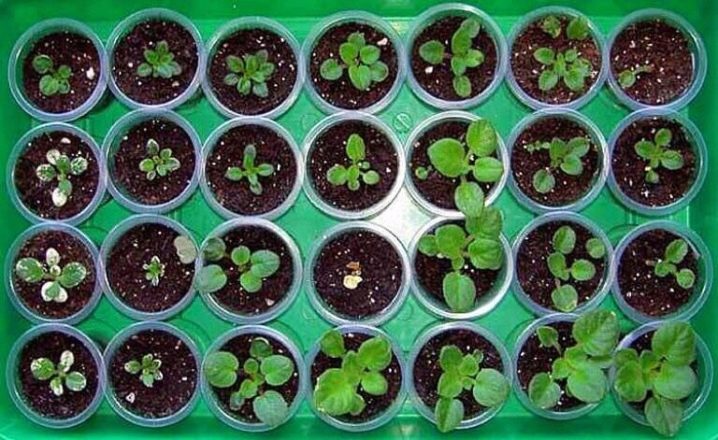
Before seating the children, dry the soil a little in a container with a mother's leaf. Heavy lumps of wet soil can injure the delicate roots. Prepare transplant cups and pots in advance. Lay drainage (expanded clay, pieces of foam plastic, brick chips) at the bottom and fill the containers with a light, loose substrate. Saintpaulia reacts well to peat and perlite soil. You can also add a small amount of ash to the substrate to decontaminate it.
If you plan to water with the wick method, then it is better to prepare a landless substrate.It consists of sand and moss in equal parts, as well as half of charcoal and peat. This mixture permeates oxygen very well to the roots and does not interfere with their development.
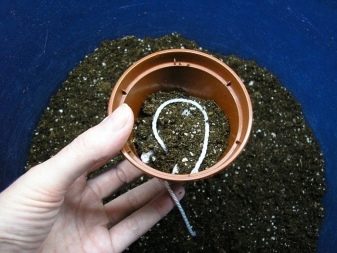
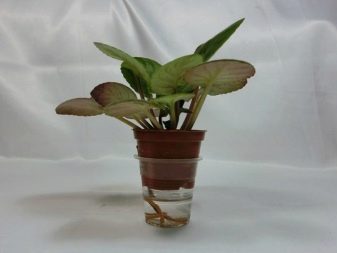
Consider the process of seating children.
- Moisten the substrate into which you plan to transplant outlets.
- It is better to plant children in very small containers. Simple plastic yoghurt cups are also fine. Do not forget to make 3-4 holes in the bottoms with an awl.
- Carefully remove the mother leaf from the pot, along with a lump of earth. Use your fingers to lightly brush the soil off the roots.
- Determine how many children the cutting has, where the root system of each of them is.
- Begin to separate the most developed and largest outlet. It is easiest to highlight it visually. Grab the base of the baby with your fingers and gently pull it away from the mother's cutting. Take your time and don't jerk. Try to minimize trauma to the roots.
- Divide the remaining children in the same way.
- You can lightly powder the root processes of the separated children with "Kornevin". For this it is convenient to use a regular soft bristled brush. Take a small amount of powder on the tip of the brush and spread it over the roots of the young rosettes.
- Sometimes it happens that a young sprout has fairly well-developed leaves, but there are practically no roots. Such a child can also be given a chance. The root system can develop quickly with proper care. Therefore, do not despair and do not throw away sprouts with undeveloped roots.
- Place each separated baby in a glass, making a small depression in the substrate. Sprinkle the roots and stem with soil, lightly compacting it. Lightly water the transplanted substrate.
- To speed up the survival and development of the planted shoots, you can put them in a mini-greenhouse for 4-5 days. In these conditions, even children with poorly developed roots come to life and grow quickly. If you have already transplanted rather large children with developed roots, then you can skip the greenhouse.
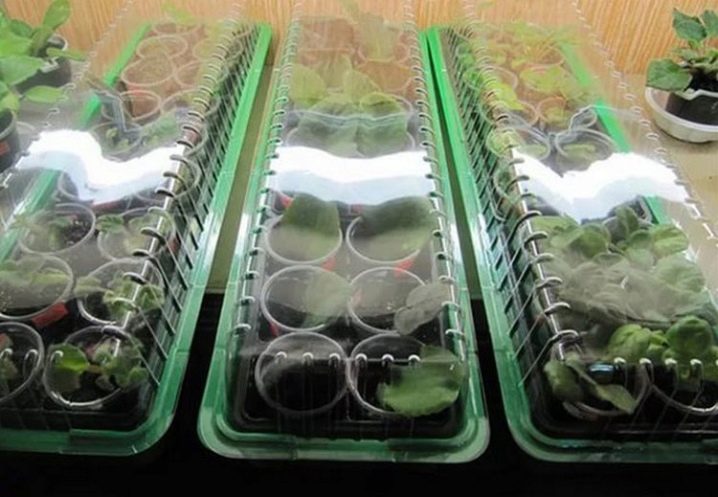
Care advice
Violets are relatively unpretentious indoor flowers, it is easy to care for them. However, in order for Saintpaulia to develop and bloom well, some rules must still be followed.
- Do not put young plants on the windowsill, if the window is periodically exposed to direct sunlight. The delicate leaves of violets can get burned.
- For transplanted outlets, proper watering is very important. Saintpaulia reacts negatively to both excess moisture (the root system rots from it) and insufficient moisture. While the children have not yet grown up, it is better to water them in very small portions using a syringe or syringe. Monitor the condition of the soil in the pots. When the earthen clod from above becomes dry, irrigation must be carried out. Immediately after transplanting, young plants should not be watered for a couple of days at all.
- Indoor violets feel most comfortable at a temperature of about + 22 ° C. The air should not be too dry.
- Young outlets need good lighting, especially if it is winter or late autumn. At this time of the year, daylight hours are very short, so there is not enough natural light for the plants. It is recommended to arrange an additional light source for violets and turn it on for 3-4 hours a day. At the same time, do not forget to turn the pots and cups so that the flower bush forms correctly and beautifully.
- After transplanting, violets do not need feeding. After 3 months, you can periodically fertilize the soil. It is best to purchase a liquid preparation containing a ready-made complex of substances.
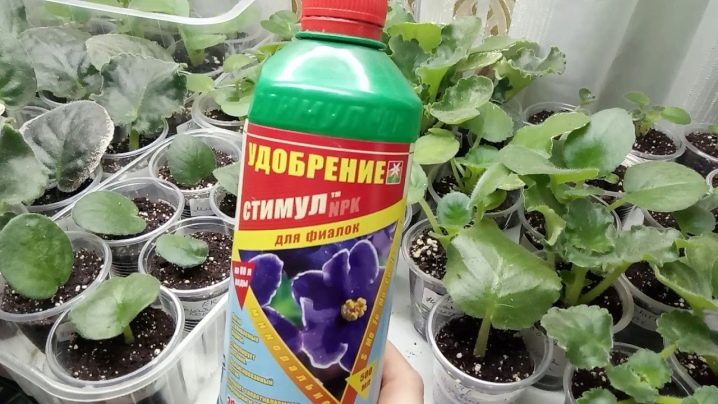
For information on how to transplant violet babies, see the next video.































The comment was sent successfully.